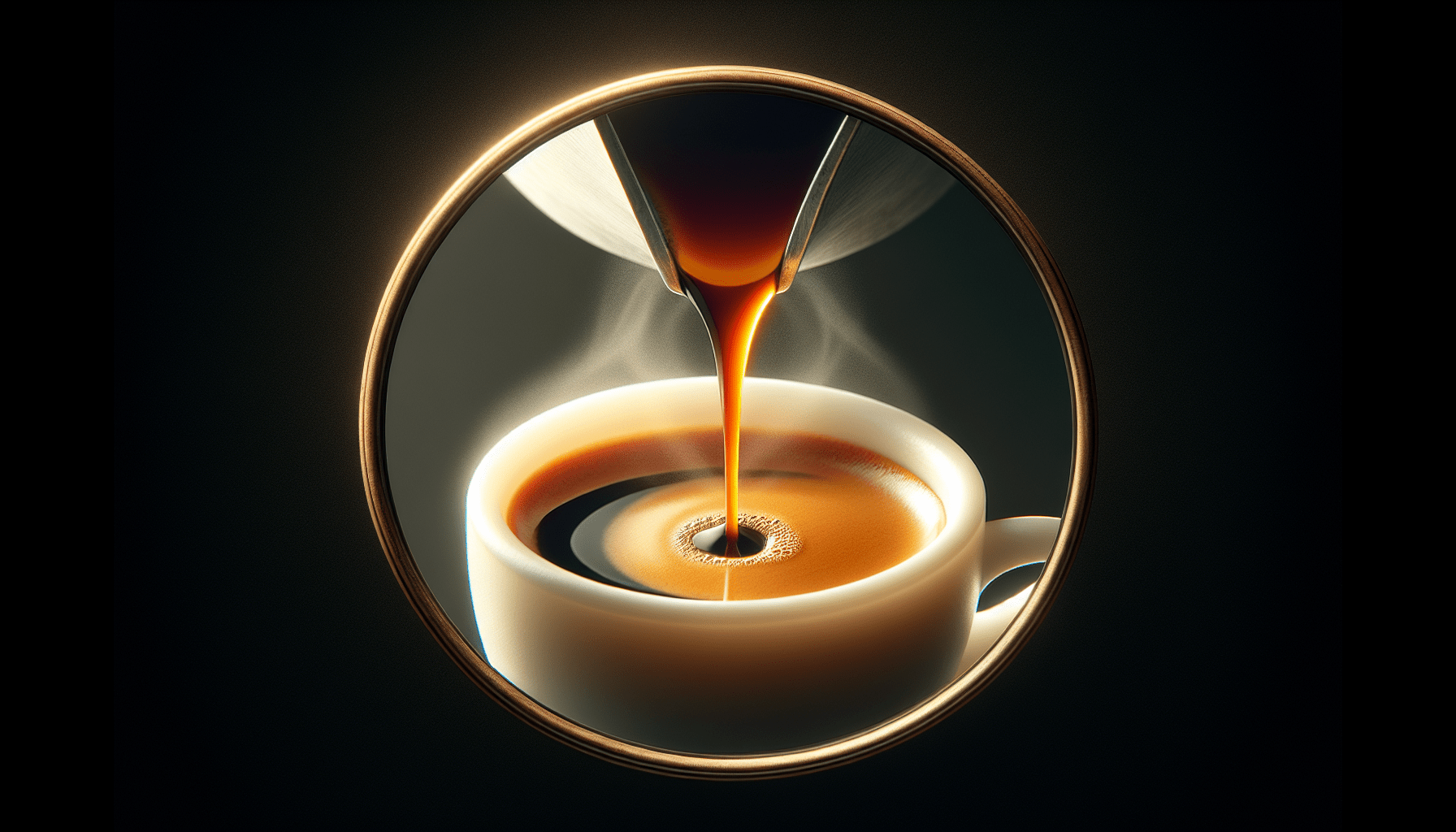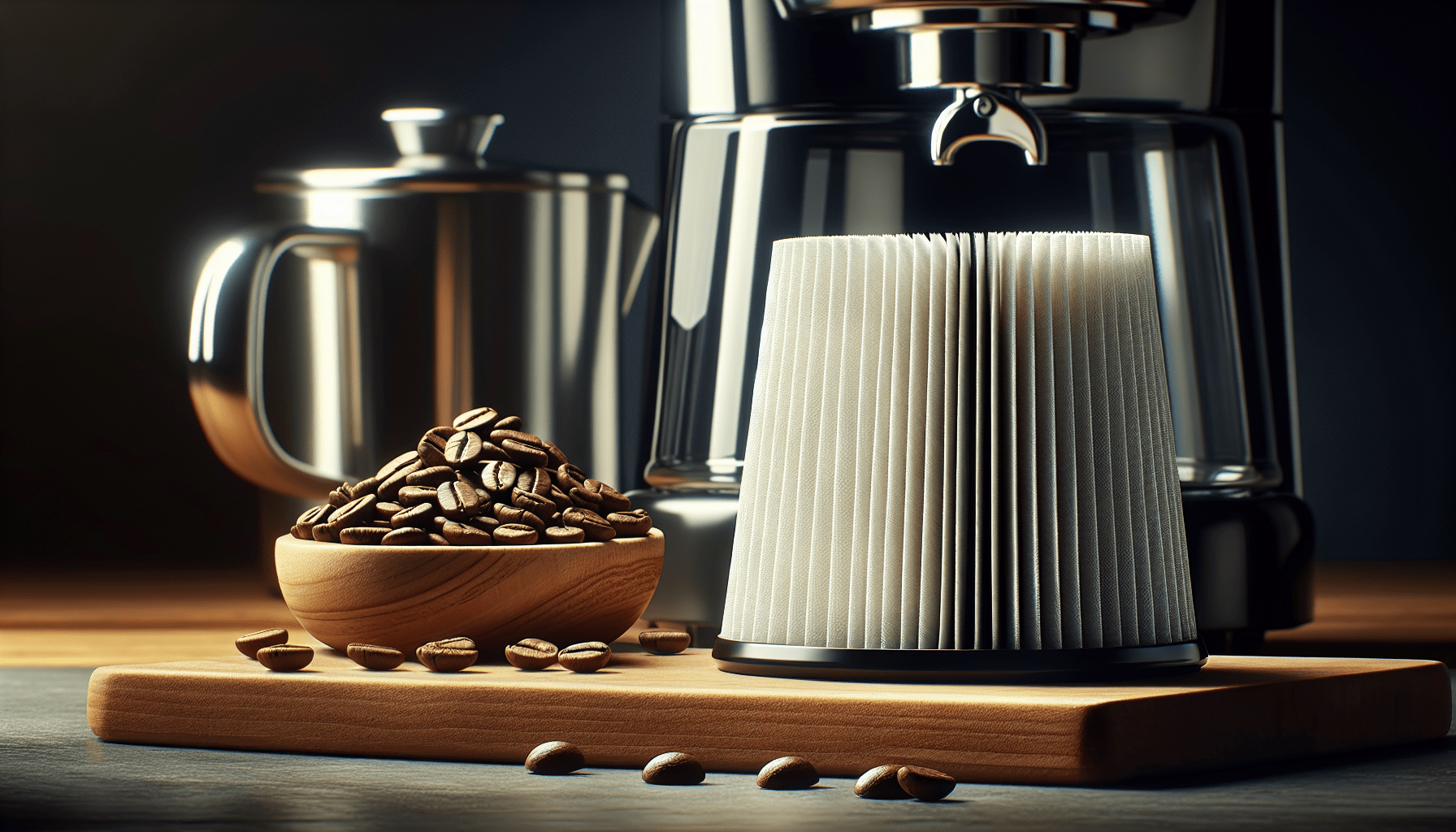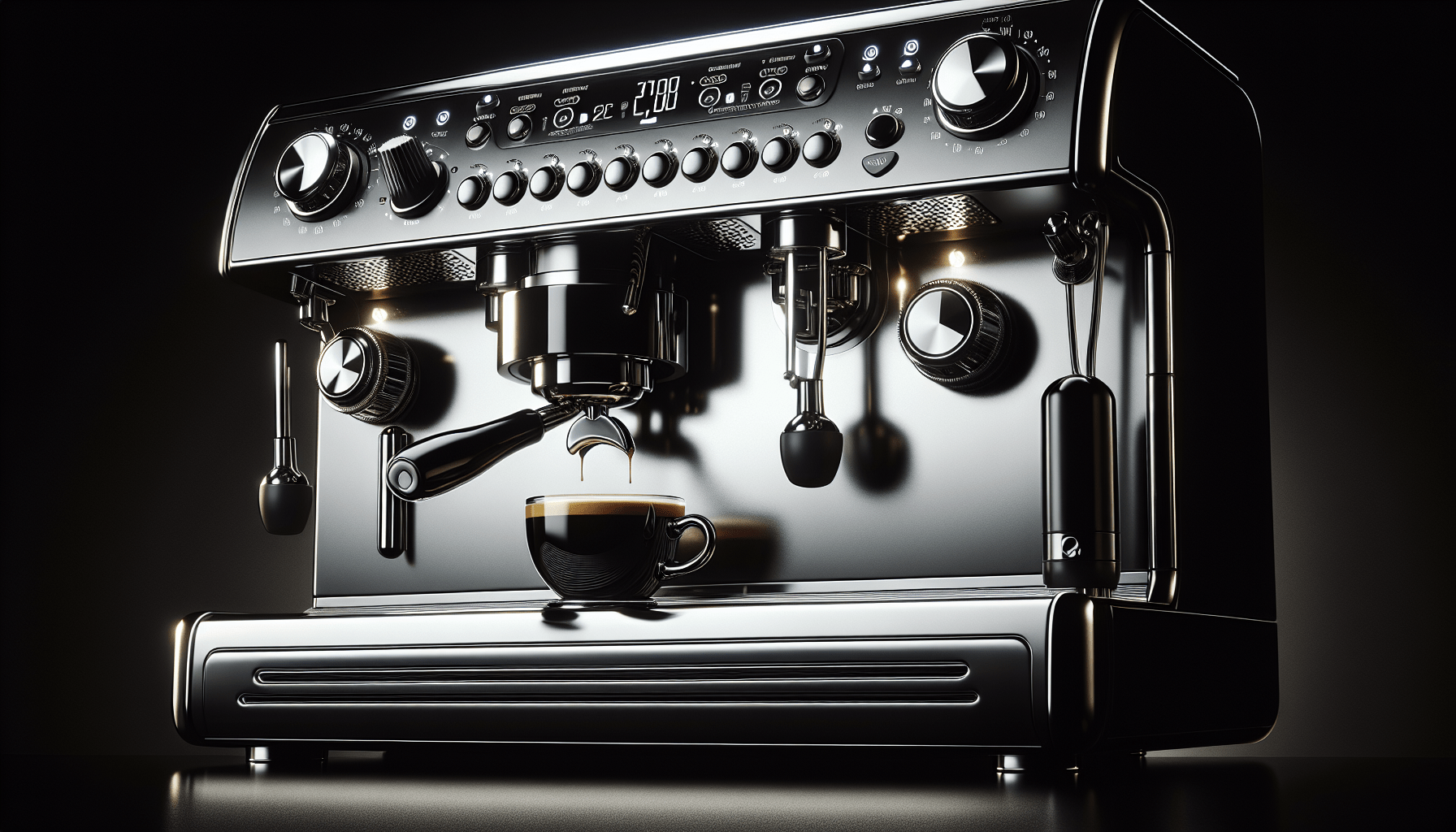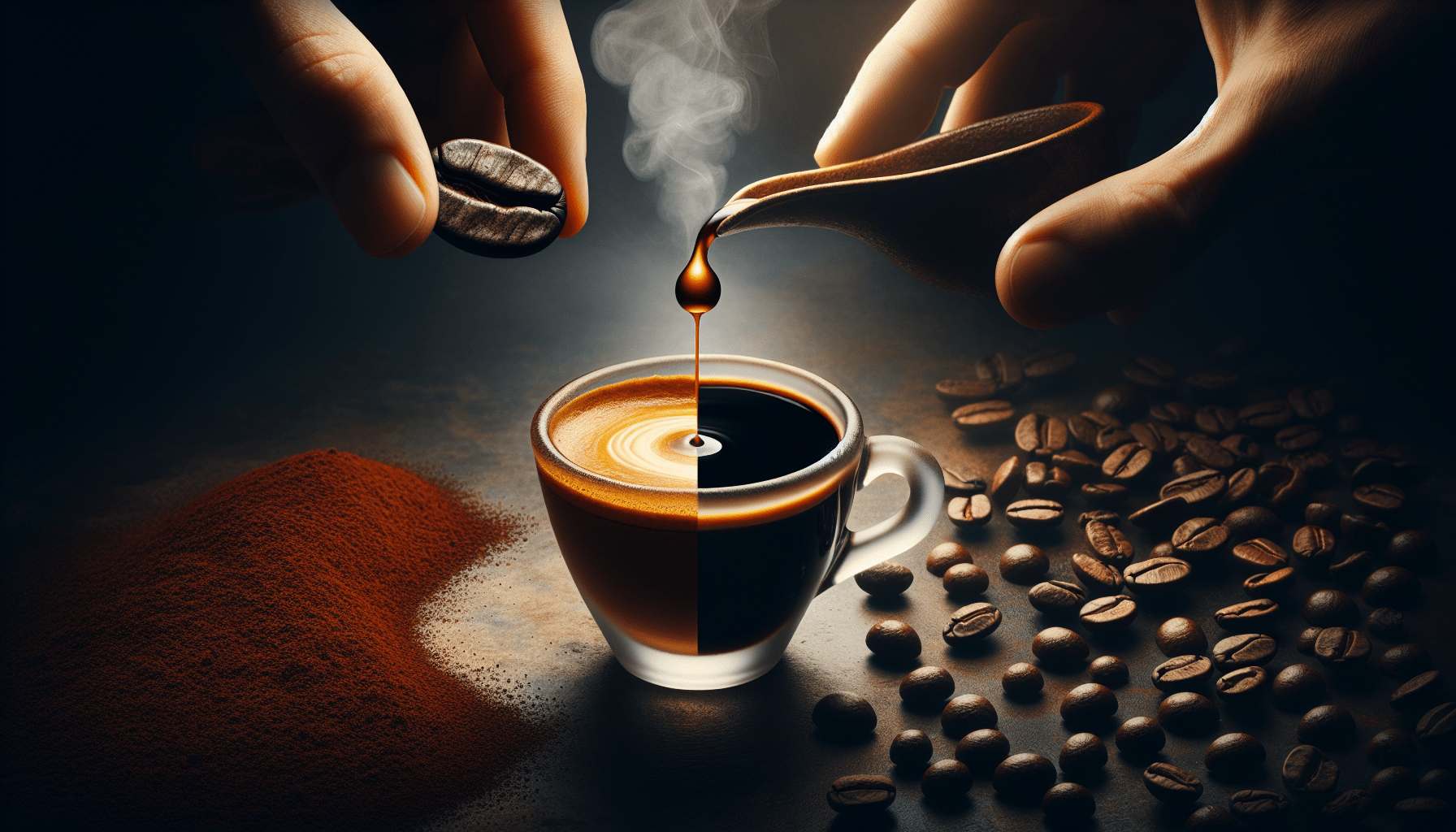If you’ve ever wondered about the contrasting characteristics of espresso and drip coffee, this article is here to guide you through the intriguing distinctions between the two. From brewing methods to flavor profiles, we’ll explore how these two beloved caffeinated beverages deliver distinct experiences and cater to various preferences. So, whether you’re a die-hard espresso enthusiast or a loyal drip coffee aficionado, get ready to discover the nuances that set these two coffee brewing methods apart.
Ingredients and Brewing Process
Drip Coffee Ingredients
To make a delicious cup of drip coffee, you’ll need three key ingredients: water, coffee beans, and a filter. The quality of the water is crucial as it can greatly affect the overall taste of the coffee. Use filtered water for the best results. When it comes to the coffee beans, choose a medium or medium-dark roast for a balanced flavor. Finally, the filter is essential for separating the grounds from the brewed coffee.
Espresso Ingredients
Creating a flavorful shot of espresso involves a different set of ingredients compared to drip coffee. Similar to drip coffee, water quality is important, so use filtered water if possible. Espresso requires finely ground coffee beans to extract the full flavor. The roast level can vary, but generally, a darker roast is preferred for its intense flavor. Unlike drip coffee, espresso does not use a filter.
Drip Coffee Brewing Process
Brewing drip coffee is a simple and straightforward process. First, grind your coffee beans to a medium consistency. Then, place the ground coffee in a filter and set it up in your coffee maker. Add water to the reservoir, following the desired coffee-to-water ratio. Start the brewing process, and within a few minutes, you’ll have a fresh pot of drip coffee ready to be enjoyed.
Espresso Brewing Process
Making espresso is a more involved process that requires specialized equipment. Begin by grinding your coffee beans into a fine powder-like consistency. Fill the portafilter with the ground coffee, distribute it evenly, and tamp it down firmly. Attach the portafilter to the espresso machine, ensuring a secure fit. Turn on the machine, and hot water will be forced through the coffee at high pressure, resulting in a concentrated shot of espresso.
Grind Size
Drip Coffee Grind Size
The grind size for drip coffee is typically medium to medium-coarse. The grounds should have a texture similar to sand, allowing the water to pass through evenly during brewing. A finer grind can lead to over-extraction, resulting in a bitter taste, while a coarser grind may lead to under-extraction, resulting in a weak and watery brew.
Espresso Grind Size
Espresso requires a much finer grind compared to drip coffee. Ideally, the espresso grounds should have a texture resembling fine sugar or powdered sugar. This fine grind allows for increased extraction during the brief brewing time, resulting in a concentrated and intense shot of espresso.
Brewing Time
Drip Coffee Brewing Time
The brewing time for drip coffee varies depending on the size of the batch and the coffee maker used. On average, it takes around 4-6 minutes for a full pot of drip coffee to brew. However, this can be influenced by factors such as the grind size, water temperature, and coffee-to-water ratio. It’s important to refer to the instructions provided with your specific coffee maker to achieve the best results.
Espresso Brewing Time
Unlike drip coffee, espresso is brewed much more quickly. The brewing time for a shot of espresso is typically around 25-30 seconds. This short brewing time allows for the extraction of concentrated flavors from the finely ground coffee. The espresso machine operates at high pressure, which helps to extract the desired characteristics of the coffee quickly and efficiently.
Coffee Strength
Drip Coffee Strength
In terms of strength, drip coffee tends to have a milder and less concentrated flavor compared to espresso. This is primarily due to the longer brewing time and larger quantity of water used. Drip coffee offers a smooth and well-rounded taste, with the ability to showcase the unique flavors of the coffee beans. It is a popular choice for those who prefer a more mild and balanced coffee experience.
Espresso Strength
Espresso, on the other hand, is known for its bold and concentrated strength. The short brewing time and high-pressure extraction process result in a rich and intense flavor profile. The concentrated nature of espresso allows for a higher caffeine content and a more pronounced taste. It is favored by those who enjoy a robust coffee experience that packs a punch.
Caffeine Content
Drip Coffee Caffeine Content
The caffeine content in a cup of drip coffee can vary depending on factors such as the type of beans used, the brewing method, and the coffee-to-water ratio. On average, an 8-ounce cup of drip coffee contains approximately 95 milligrams of caffeine. However, it’s important to note that this can vary significantly, and some drip coffees may have a higher or lower caffeine content.
Espresso Caffeine Content
Despite its stronger taste, a single shot of espresso typically contains less caffeine than a cup of drip coffee. On average, a 1-ounce shot of espresso contains approximately 63 milligrams of caffeine. However, it’s worth noting that espresso is often consumed in smaller quantities compared to drip coffee. Espresso-based drinks like cappuccinos and lattes can contain multiple shots of espresso, resulting in a higher overall caffeine content.
Flavor Profile
Drip Coffee Flavor Profile
The flavor profile of drip coffee is often described as smooth, well-balanced, and more nuanced compared to espresso. Drip coffee allows for the full expression of the coffee beans’ flavors, highlighting their unique characteristics. Depending on the origin and roast of the coffee beans, drip coffee can exhibit a wide range of flavors, including fruity, floral, nutty, or chocolaty notes.
Espresso Flavor Profile
Espresso boasts a bold and concentrated flavor profile. Due to the high-pressure extraction process, espresso tends to have a stronger and more intense taste. The flavors in espresso are often described as rich, complex, and sometimes even bittersweet. The concentrated nature of espresso allows for a deep exploration of the coffee beans’ flavors, which can include hints of caramel, chocolate, dark fruit, or even floral undertones.
Serving Size
Drip Coffee Serving Size
The serving size for drip coffee is typically larger compared to espresso. A standard serving of drip coffee is often measured as an 8-ounce cup. This allows for a satisfying and more prolonged coffee-drinking experience, perfect for leisurely mornings or sharing with friends and family.
Espresso Serving Size
Espresso is traditionally served in smaller quantities. A standard serving of espresso is typically 1 ounce, which is equivalent to a single shot. However, espresso-based drinks like cappuccinos or lattes may contain multiple shots of espresso, resulting in varying serving sizes. The smaller serving size of espresso makes it an ideal choice for a quick caffeine boost or when enjoying a flavorful coffee experience in a shorter time frame.
Equipment Needed
Drip Coffee Equipment
To brew drip coffee, you will need a few essential pieces of equipment. Firstly, a coffee maker with a water reservoir and a heating element is necessary. You’ll also need a filter, which can be made of paper, cloth, or a metal mesh, depending on your preferences. Additionally, a grinder is essential for grinding the coffee beans to the desired consistency. Optional accessories include a digital scale for precise measurements and a timer to ensure accurate brewing times.
Espresso Equipment
Making espresso requires specialized equipment. The core component is an espresso machine, which includes a water reservoir, a heating element, a pump, and a portafilter. The portafilter holds the ground coffee and is attached to the espresso machine. Some machines may also have built-in grinders for added convenience. Other accessories include a tamper for compacting the coffee grounds and a frothing wand for creating milk-based espresso drinks like lattes or cappuccinos.
Popular Variations
Drip Coffee Variations
Drip coffee offers a versatile canvas for a wide range of variations and customizations. Some popular variations include adding flavored syrups, spices, or extracts to the brewed coffee to create unique flavor profiles. Other popular options include incorporating milk or cream for a smoother and creamier texture or even experimenting with different brewing methods such as pour-over or French press for a change in taste and brewing experience.
Espresso Variations
Similar to drip coffee, espresso provides a platform for various creative variations. One popular espresso variation is the espresso shot with added flavors or syrups, such as vanilla, caramel, or hazelnut. Espresso is also the base for popular Italian drinks like the cappuccino (espresso with steamed milk and foam) or the latte (espresso with steamed milk). These variations allow for different taste experiences and cater to individual preferences.
Cultural Significance
Drip Coffee Cultural Significance
Drip coffee holds a significant cultural significance, particularly in Western countries like the United States. It is deeply ingrained in morning rituals and is often associated with a relaxed and comforting start to the day. Drip coffee promotes socialization and can be enjoyed in various settings, from cozy homes to bustling cafes. It has become a symbol of shared moments, conversation, and community bonding.
Espresso Cultural Significance
Espresso plays an integral role in many cultures, particularly in Italy where it originated. It is synonymous with Italian café culture and is enjoyed throughout the day, often as a quick pick-me-up or a pleasant pause during a busy day. Espresso brings people together, encouraging social interaction and fostering a sense of togetherness. The art of drinking espresso is cherished, with many cafes in Italy serving it exclusively and often consumed while standing at the bar counter. Espresso represents a blend of tradition, sophistication, and a vibrant coffee culture.
In conclusion, while both drip coffee and espresso share the commonality of being made from coffee beans, they offer distinct brewing processes, flavor profiles, and cultural significance. Drip coffee provides a milder and more well-rounded taste, perfect for those seeking a smooth and balanced coffee experience. On the other hand, espresso offers a bold and concentrated flavor, appealing to those who crave a stronger and intense coffee experience. Understanding the differences between drip coffee and espresso allows you to choose the brewing method that best suits your taste preferences and coffee cravings. So whether you prefer a leisurely morning affair with a pot of drip coffee or a quick and flavorful shot of espresso, both options promise a delightful journey into the world of coffee.




